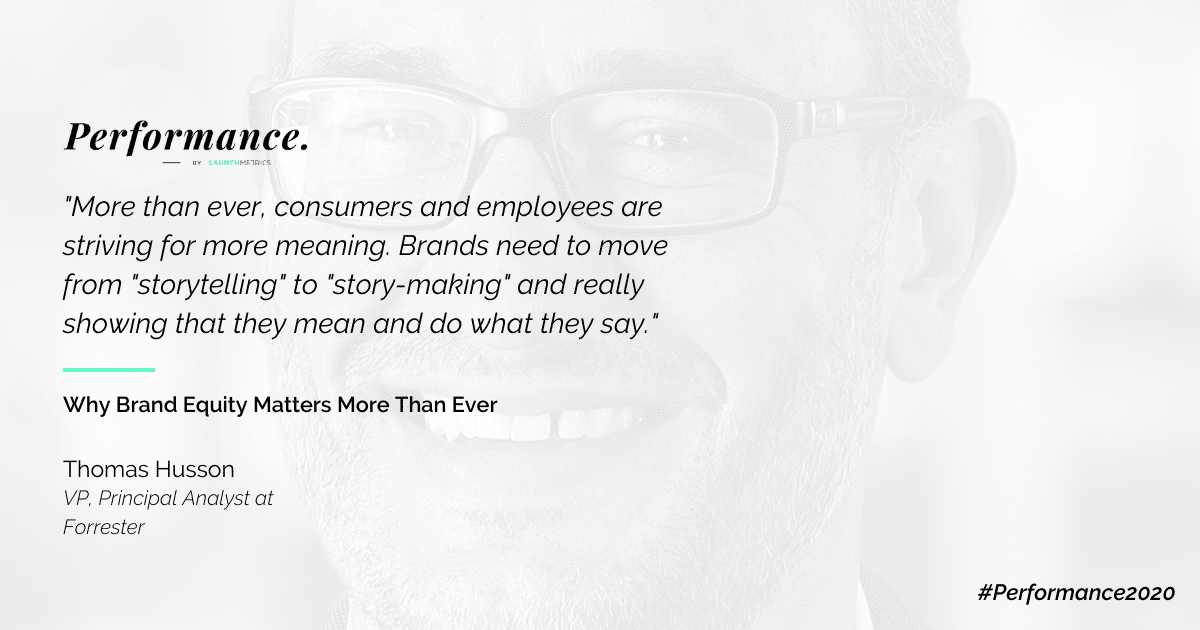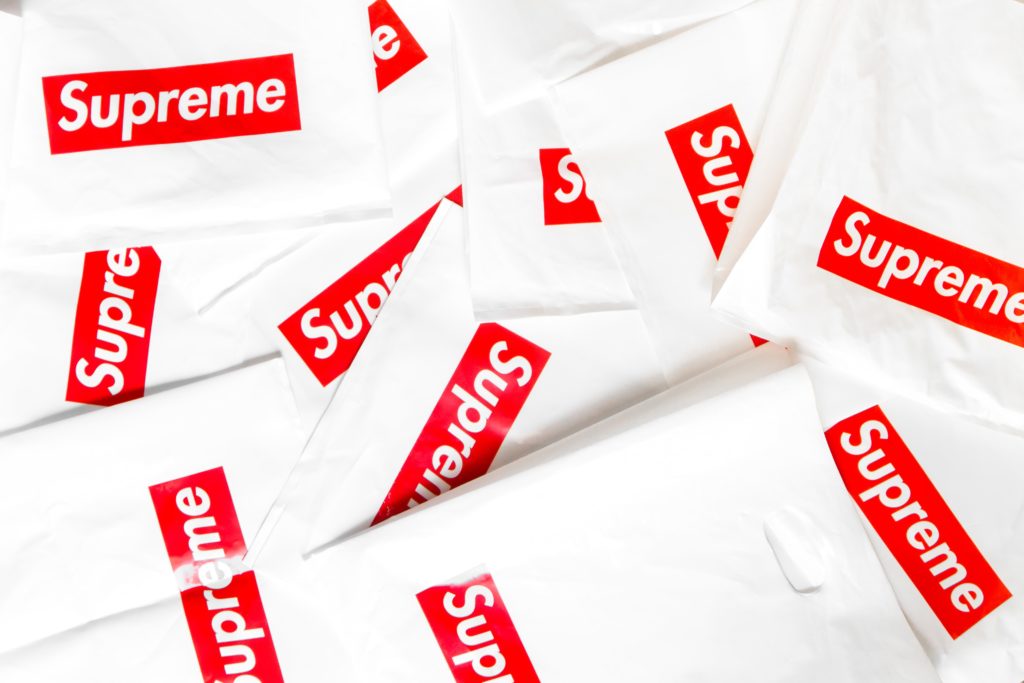We were pleased to welcome Thomas Husson, VP, Principal Analyst at Forrester to our recent digital summit, Performance by Launchmetrics, which took place on November 5th. For his keynote session, Thomas spoke about brand equity and shared exclusive insights from Forrester on why brands need to measure consumer energy and present a holistic message, story, and experience for their customers. In today's article, we cover some of the key takeaways from Thomas' session. If you would like to watch any of the sessions from Performance on replay, just click here!
Key Takeaways from Thomas Husson of Forrester on Brand Equity at Performance by Launchmetrics
Measure both consumer and brand energy
Something that Thomas touched upon early in his session was the concept of 'consumer energy' and the importance of measuring this if you want your 'brand energy' to match or equalize your consumers' desires and expectations. He noted that there are "a number of different dimensions we have to look at when measuring this - such as the desire for consumers to identify with a tribe or community, the notion of trust and comfort vs. novelty." Measuring these aspects allows brands to develop a better understanding of their target audience and their expectations, which could potentially later influence their path to purchase.
The brand's energy, on the other hand, is what determines the brand value or equity, and can be measured in terms of "salience, emotion, and fit." The key, Thomas noted, is to "fuel brand energy with positive emotions at peaks of the customer journey." This is particularly relevant today, as we speak about the changing consumer, and what influences their affinity or loyalty to a brand. Particularly amongst younger generations, more and more consumers demand as much information as possible around a brand in order to understand if their values and messaging align before purchasing any product. Therefore, brand and consumer energy have to have some kind of synergy in order to drive frequent sales.
Brands have to make the move towards 'story-making'
"More than ever, consumers and employees are striving for more meaning. Brands need to move from "storytelling" to "story-making" and really showing that they mean and do what they say" noted Thomas. Today, it isn't good enough just to tell a brand story - you have to make consumers feel like they are involved in the experience, and can actually see the brand living the story they tell. There have been a few examples from the fashion, luxury, and beauty industries under which this has happened.

Gary Pinagot, the e-Reputation and Social Media Director at Dior also spoke at our summit, noting the brand's success during the pandemic. He chalked a large portion of this down to reducing product promotion, trying to empathize with individuals in their leading markets, and doing what they could to not just communicate solidarity but also support communities. Gary mentioned the brand's partnership with Chiara Ferragni, who is from a largely impacted area in Italy which was struggling during the pandemic. The partnership allowed the brand to partner with someone who was extremely vocal in her support and fundraising efforts within Italy, as Dior helped to contribute to this ongoing effort.
Story-making can come in a number of different forms, whether being direct about the diversity and inclusion initiatives your company is actually actioning or being transparent about your supply chain. The most important thing for brands is to not only speak but do.
The transformation of data into actionable insights is critical
It's no secret that data has become increasingly integrated into brands' internal processes over the last ten years. However, with the global pandemic accelerating digitization even further, the need for data has become even more apparent. Marketing and PR teams are under even more pressure to prove their ROI as budgets are being reallocated or cut back. And, the best solution to this problem, is data.
Data can tell a story about consumer preferences, engagement towards certain products, and projections of product popularity in different markets. For example, if as a brand you set up a digital showroom, you could determine the most popular items from your Key Opinion Leaders, by seeing which images or products are the most 'downloaded.' From this, you can use the information to form actionable insights around how many samples or products you should produce for your first launch, in order to maximize efficiency and reduce losses.
Finally, unlike sales, the ROI of your marketing activities is intangible. It doesn't necessarily always translate into concrete, readable dollars that you can measure with certainty - so, it is important to use a unified metric across all of your marketing activations which you can use to estimate the value being generated from each area. For example, you could use Media Impact Value™ (MIV®) to compare an influencer marketing campaign with a Media mention, in order to see which brought the most value for your brand. Or, you could monitor the MIV® of your competitors' campaigns and see what strategies are working the best in your market, by benchmarking your performance against your competitors. More on how to do this, here.
"Trust in brands is increasing whilst trust in institutions is decreasing"
Thomas noted that whilst trust in brands is increasing trust in political institutions and large bodies are decreasing. This is probably due to the fact that brands are becoming more transparent with consumers and audiences, and making actioned efforts to foster brand loyalty. Trust is a huge part of brand equity, and can really make or break a company in fashion, luxury, or beauty. A simple social media post can damage a brand's equity if its strategy is not aligned with their communications, and so brands must make smart decisions in order to protect the value they have already built.
We hope you enjoyed this article on the key takeaways from Thomas Husson of Forrester on brand equity at Performance by Launchmetrics. If you would like to learn more about how you can foster and build brand equity using data, just click on the banner below.

